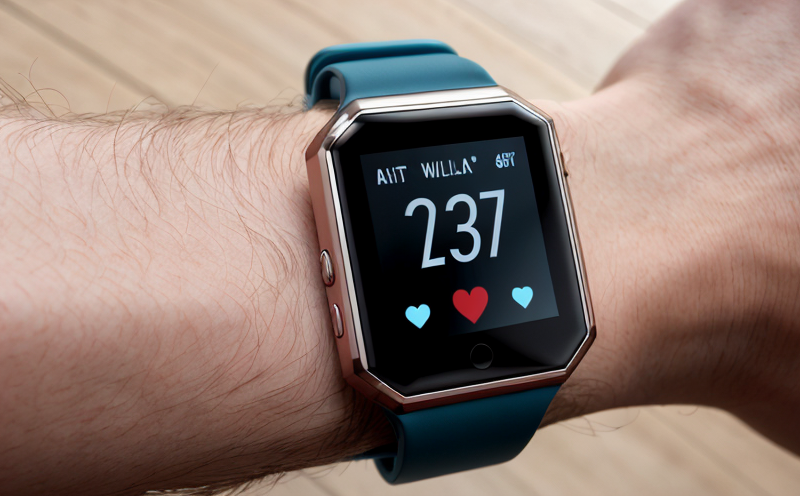ISO 18562-3 VOC Emission Testing in Breathing Wearables
The development of wearable technology has revolutionized the medical device industry, particularly in digital health. Devices that monitor vital signs or provide therapeutic benefits are becoming increasingly sophisticated and compact. However, as these devices come into closer contact with the skin, ensuring their safety and environmental impact becomes paramount.
One critical aspect of this safety is the potential for volatile organic compounds (VOCs) to be released from materials used in the construction of breathing wearable devices. These VOCs can pose health risks when inhaled during extended use or contact with the skin, especially if they exceed permissible limits set by international standards.
ISO 18562-3 provides a standardized method for determining the volatile organic compound emissions from materials and components used in breathing wearable devices. This standard is crucial because it ensures that all manufacturers adhere to consistent testing procedures, thereby maintaining high safety standards across the industry.
The process involves several key steps: sample preparation, exposure conditions, detection methods, and data analysis. Samples are prepared by selecting representative pieces of the material used in the device. These samples are then exposed under controlled environmental conditions that simulate real-world use scenarios. The emitted VOCs are captured and quantified using sophisticated analytical instruments capable of detecting even trace amounts.
The results from this testing are analyzed to ensure compliance with specified limits outlined by ISO 18562-3. Compliance is critical not only for meeting regulatory requirements but also for protecting the health and well-being of users. Non-compliance can lead to product recalls, reputational damage, and legal consequences.
Understanding the nuances of this testing process helps stakeholders such as quality managers, compliance officers, R&D engineers, and procurement teams make informed decisions about material selection and design modifications. By adhering to these standards, manufacturers can ensure their products are safe for consumers while also gaining international recognition and acceptance in competitive markets.
- Sample preparation involves selecting representative pieces of the material used in the device.
- The samples are then exposed under controlled environmental conditions that simulate real-world use scenarios.
- VOCs are captured and quantified using sophisticated analytical instruments capable of detecting even trace amounts.
Applied Standards
The testing procedure for VOC emissions from breathing wearable devices is governed by ISO 18562-3, which specifies the methods and criteria for determining volatile organic compound emissions. This standard ensures that all tests are conducted under consistent conditions, thereby providing reliable data.
ISO 18562-3 outlines several key components of the testing process:
- Sample preparation
- Exposure conditions
- Detection methods
- Data analysis and reporting
The standard emphasizes accuracy, repeatability, and precision in the testing process. By adhering to these guidelines, laboratories can ensure that their results are credible and can be trusted by regulatory bodies and industry stakeholders.
Eurolab Advantages
At Eurolab, we pride ourselves on providing comprehensive testing solutions tailored to the unique needs of our clients. Our expertise in medical device testing, particularly in the realm of breathing wearable devices, sets us apart as a leader in this field.
- We offer state-of-the-art facilities equipped with the latest analytical instruments capable of detecting even trace amounts of VOCs.
- Our team of highly qualified professionals ensures that all tests are conducted under controlled conditions that mimic real-world use scenarios.
- We provide clients with detailed reports that include a comprehensive analysis of test results, along with recommendations for improving product safety and compliance.
By choosing Eurolab for your VOC emission testing needs, you can be assured of receiving accurate, reliable data that meets or exceeds international standards. Our commitment to excellence ensures that our clients receive the best possible service, supporting their efforts in maintaining high-quality products and protecting user health.
International Acceptance and Recognition
- Australia: ISO 18562-3 is widely recognized as a benchmark for ensuring the safety of medical devices, including breathing wearables.
- Canada: Compliance with this standard is essential for gaining market access and maintaining good standing in regulatory audits.
- Europe: The European Union mandates adherence to ISO standards, making compliance with ISO 18562-3 a legal requirement for manufacturers operating within the region.
- Japan: Although not mandatory, adherence to international standards like ISO 18562-3 enhances reputation and facilitates easier market entry.





